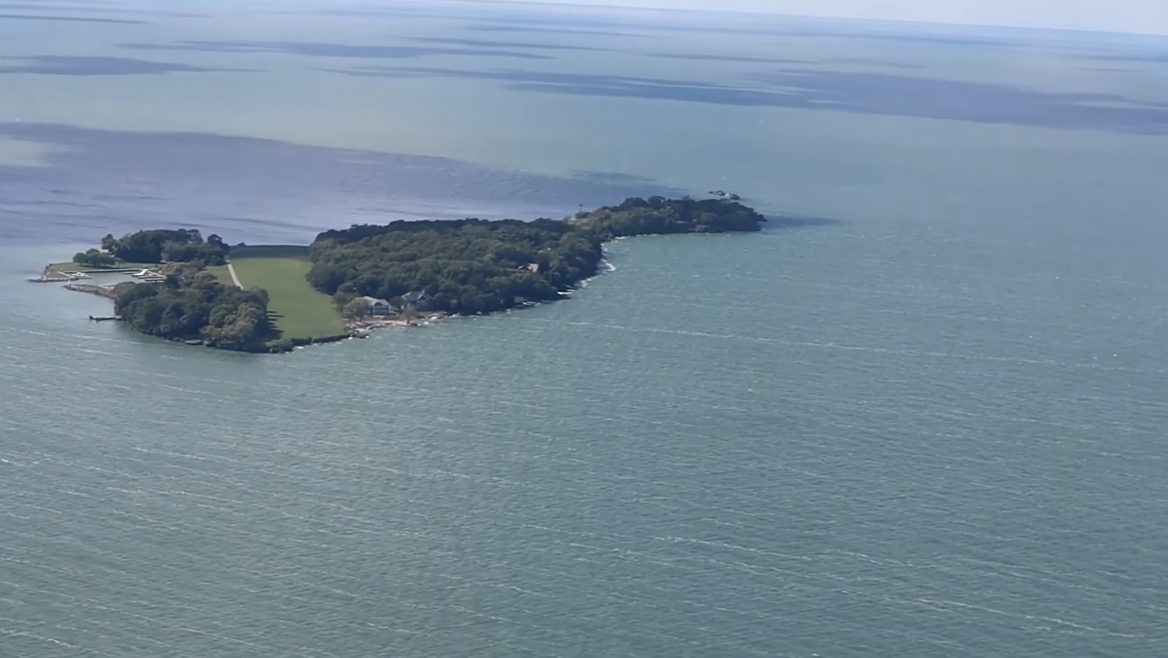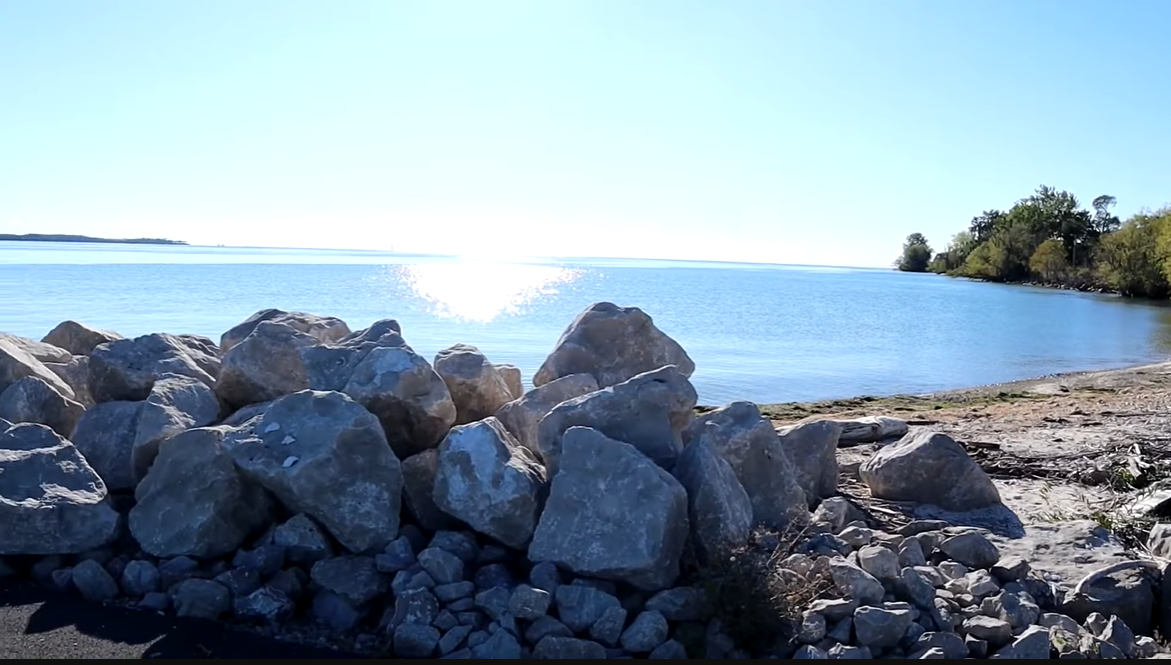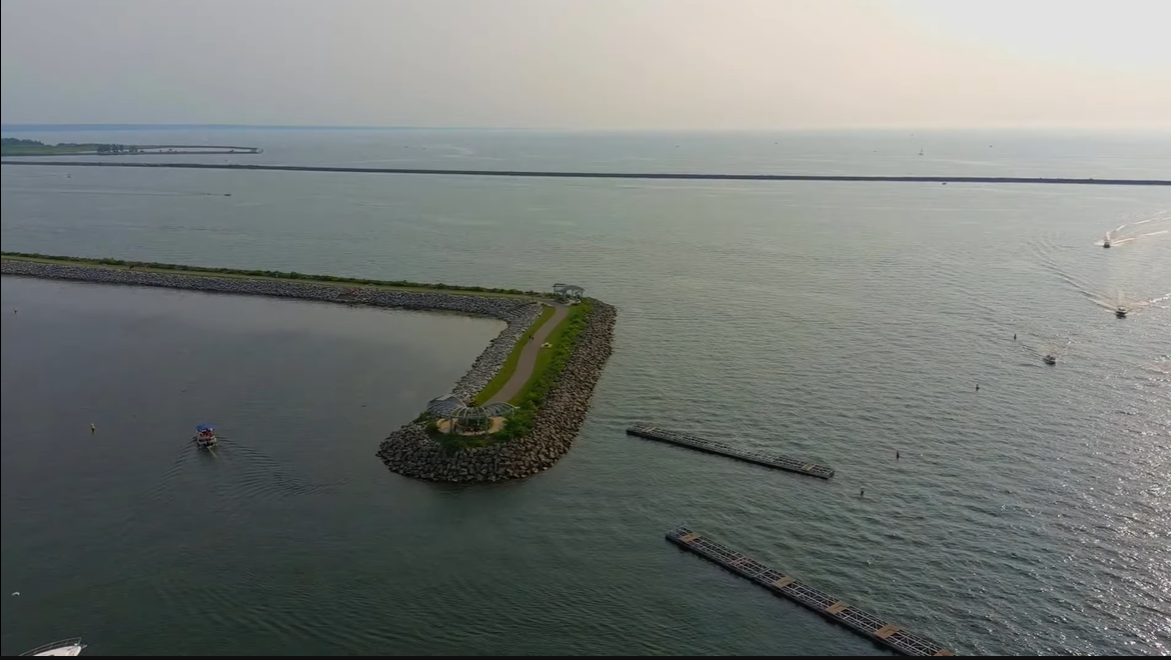Lake Erie
Lake Erie is one of the five Great Lakes of North America and the eleventh-largest globally by surface area. It is situated on the border between the United States and Canada, with the U.S. states of Ohio, Pennsylvania, and New York and the Canadian province of Ontario all having shorelines along the lake.
.png) |
| Lake Erie |
Lake Erie has a surface area of about 9,910 square miles (25,700 square kilometers), making it the fourth-largest of the Great Lakes by surface area. The lake has an average depth of approximately 62 feet (19 meters) and a maximum depth of 210 feet (64 meters). Lake Erie's water volume is about 116 cubic miles (484 cubic kilometers). It is the shallowest of the Great Lakes, which makes it the warmest and most biologically productive.
Lake Erie is connected to Lake Huron by the Detroit River, Lake St. Clair, and the St. Clair River, forming part of the Great Lakes system. It drains into Lake Ontario through the Niagara River, which is home to the famous Niagara Falls. The lake also has a connection to the Welland Canal, an important shipping route that bypasses the falls and facilitates transportation between the Great Lakes and the Atlantic Ocean via the Saint Lawrence Seaway.
The lake is dotted with several islands, with some of the notable ones being Pelee Island, Kelleys Island, and Middle Bass Island. These islands are popular tourist destinations known for their natural beauty, vineyards, and recreational activities. The shoreline of Lake Erie is lined with major cities, including Cleveland, Toledo, Erie, and Buffalo, which serve as important economic and cultural hubs for the region.
.png) |
| Lake Erie |
.png) |
| Lake Erie |
Lake Erie supports a significant fishing industry, particularly for yellow perch and walleye. Its diverse ecosystem includes species such as smallmouth bass and steelhead trout. The lake’s relatively shallow depth makes it highly productive for fisheries, and it is known for having one of the most significant commercial and recreational fisheries in North America.
Historically, Lake Erie has played a critical role in transportation, trade, and military history. During the War of 1812, the Battle of Lake Erie was a pivotal naval engagement that secured American control of the lake. The lake has also served as a key waterway for shipping coal, iron ore, and other industrial goods that have fueled economic growth in the region.
.png) |
| Lake Erie |
The lake offers various recreational activities, including boating, fishing, and swimming. Presque Isle State Park in Erie, Pennsylvania, is a popular destination for outdoor enthusiasts. The lake’s shores feature numerous state parks, beaches, and scenic trails that attract visitors year-round.
.png) |
| Lake Erie |
In conclusion, Lake Erie is a vital natural resource with significant economic, ecological, and recreational importance. Its history, biodiversity, and strategic location make it an essential part of the Great Lakes system. Continued efforts to address environmental challenges and promote sustainable practices are crucial to ensuring the health and longevity of Lake Erie for future generations.
FAQs
Q. Where is Lake Erie?/What state is Lake Erie in?/Is Lake Erie in Canada or USA?
A. Lake Erie is situated on the border between the United States and Canada. It is part of the Great Lakes system. The lake's shores touch four U.S. states and one Canadian province. The U.S. states with coastlines along Lake Erie are Ohio, Pennsylvania, and New York, while the Canadian province is Ontario. Therefore, Lake Erie is located in both the United States and Canada.
.png) |
| Lake Erie Map |
Q. How did Lake Erie get its name?
A. Lake Erie was named by early European explorers in honor of the Native American people who inhabited the region. The lake's name is derived from the Erie tribe, one of the Native American groups that lived in the area around the southern shore of the lake.
The Erie people, also known as the Eriez or Erielhonan, were a Native American people who historically lived along the southern shore of Lake Erie and in the surrounding regions. The name "Erie" was adopted by the French and later by the English to refer to both the Native American people and the lake itself.
The French explorer Louis Jolliet and Jesuit missionary and explorer René-Robert Cavelier, Sieur de La Salle, are among the early European explorers who played a role in naming and documenting the Great Lakes, including Lake Erie, during their expeditions in the late 17th century. The name Lake Erie has been used since that time to refer to this particular body of water.
Q. How big is Lake Erie?
A. Lake Erie is the fourth-largest of the five Great Lakes of North America. Here are some key statistics about the size of Lake Erie:
Surface Area: Lake Erie has a surface area of approximately 9,910 square miles (25,700 square kilometers). This makes it the fourth-largest Great Lake by surface area.
Length: The lake is about 241 miles (388 kilometers) long.
Width: It has a maximum width of about 57 miles (92 kilometers).
Depth: Lake Erie has an average depth of around 62 feet (19 meters) and a maximum depth of about 210 feet (64 meters).
Q. How deep is Lake Erie?/How deep is Lake Erie in feet?
A. Lake Erie has an average depth of approximately 62 feet (19 meters). However, its maximum depth reaches about 210 feet (64 meters). This makes Lake Erie the shallowest of the Great Lakes by maximum depth.
Q. How wide is Lake Erie?
A. Lake Erie is approximately 241 miles (388 kilometers) long from west to east, and it has a maximum width of about 57 miles (92 kilometers) from north to south. These dimensions can give you a sense of the lake's overall size and shape.
Q. How many gallons of water are in Lake Erie?
A. Calculating the volume of water in a lake involves multiplying the surface area of the lake by its average depth. For Lake Erie, with a surface area of approximately 9,910 square miles (25,700 square kilometers) and an average depth of around 62 feet (19 meters), the estimated volume can be determined.
Volume = Surface Area × Average Depth
Converting the measurements to consistent units (square miles to square feet and feet to gallons):
Surface Area = 9,910 square miles × 27,878,400 square feet/square mile
≈ 276,741,840,000 square feet
Average Depth = 62 feet
Now, calculate the volume:
Volume ≈ 276,741,840,000 square feet × 62 feet
≈ 17,136,403,280,000 cubic feet
Finally, convert cubic feet to gallons (1 cubic foot = 7.48052 gallons):
Volume ≈ 17,136,403,280,000 cubic feet × 7.48052 gallons/cubic foot
≈ 128,345,256,380,096 gallons
So, there are approximately 128 trillion gallons of water in Lake Erie.
Lake Erie Photos
.png) |
| Lake Erie |
.png) |
| Lake Erie |
.png) |
| Lake Erie |
.png) |
| Lake Erie |
.png) |
| Lake Erie |
.png) |
| Lake Erie |
.png) |
| Lake Erie |
.png) |
| Lake Erie |
.png) |
| Lake Erie |
.png) |
| Lake Erie |
.png) |
| Lake Erie |
.png) |
| Lake Erie |
.png) |
| Lake Erie |
.png) |
| Lake Erie |
.png) |
| Lake Erie |
.png) |
| Lake Erie |
.png) |
| Lake Erie |
.png) |
| Lake Erie |
.png) |
| Lake Erie |
.png) |
| Lake Erie |
.png) |
| Lake Erie |
.png) |
| Lake Erie |
.png) |
| Lake Erie |
.png) |
| Lake Erie |
.png) |
| Lake Erie |

.png)
.png)
.png)
.png)
.png)
No comments:
Post a Comment